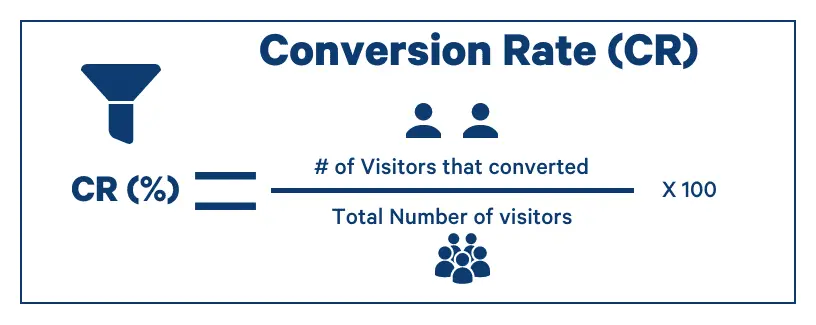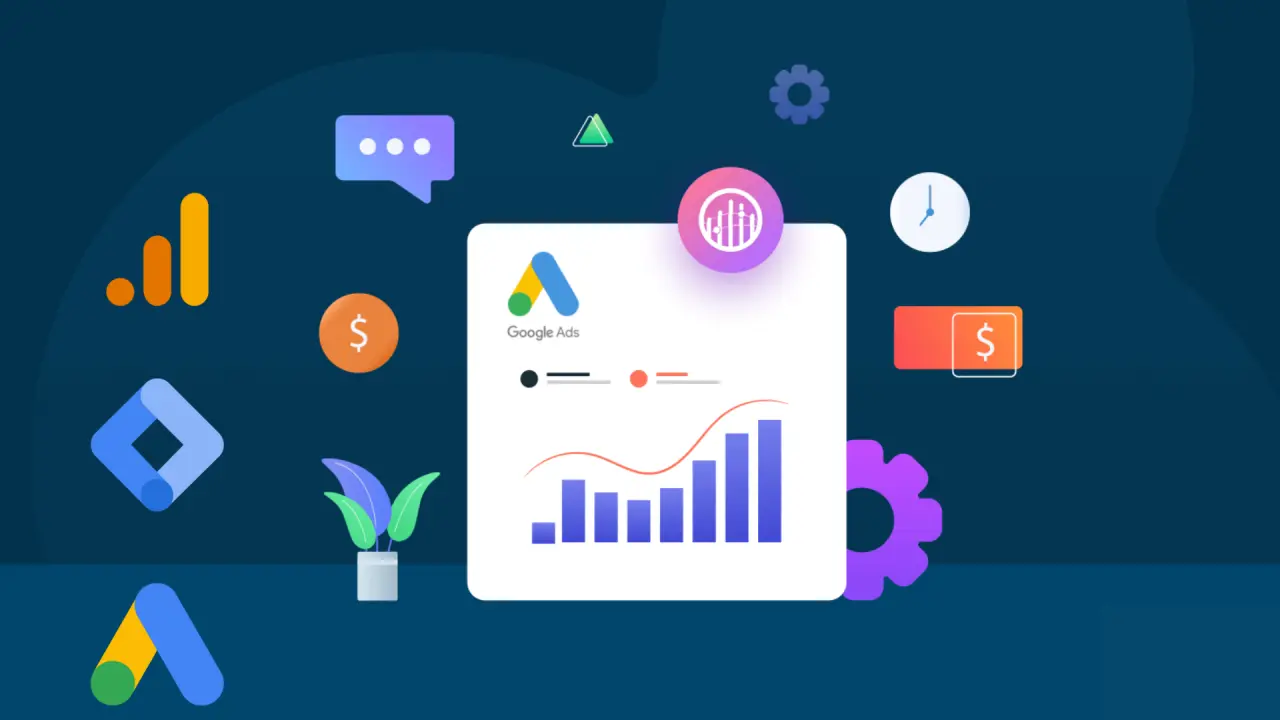What Is The Average Conversion Rate For Google Ads?
Are you curious about the average conversion rate for Google Ads? Wondering what results you can expect from your own advertising campaigns? Look no further, because we’ve got the answers you’re looking for.
When it comes to online advertising, knowing the average conversion rate can help you gauge the effectiveness of your campaigns. Google Ads, being one of the most widely used advertising platforms, offers valuable insights into this metric.
In this article, we’ll delve into the average conversion rate for Google Ads and what factors can influence it. We’ll explore industry benchmarks, best practices, and strategies to boost your conversion rates. Whether you’re just starting out or have an established presence, this information is essential for maximizing your ROI.
So, if you’re ready to take your Google Ads campaigns to the next level and optimize your conversions, keep reading. Get ready to unlock the secrets of successful advertising and achieve greater results with your online marketing efforts.
Google Ads Conversion Rate Definition
Before we dive into the average conversion rate for Google Ads, let’s first understand what conversion rate means in the context of online advertising.
The conversion rate is the percentage of users who take a desired action, such as making a purchase, filling out a form, or subscribing to a newsletter, after clicking on your Google Ads. It is a key performance indicator (KPI) that helps you measure the effectiveness of your ad campaigns and the quality of your website or landing page.
To calculate the conversion rate, you divide the number of conversions by the total number of ad clicks and multiply by 100. This gives you a percentage that represents the rate at which users are converting into customers or taking the desired action.
Google Ads Conversion Rate Formula

To calculate the conversion rate for your Google Ads campaigns, you can use the following formula:
Conversion Rate = (Conversions / Clicks) * 100
For example, if you had 100 conversions from 1000 ad clicks, your conversion rate would be (100 / 1000) * 100 = 10%.
Calculating your conversion rate allows you to track the performance of your campaigns and identify areas for improvement. By analyzing this metric, you can make data-driven decisions and optimize your advertising strategy to maximize your return on investment.
What Qualifies as a Conversion Activity?
Before we discuss the average conversion rate for Google Ads, let’s clarify what qualifies as a conversion activity.
A conversion activity can vary depending on your business goals and objectives. It could be a purchase, a form submission, a download, a sign-up, or any other action that is valuable to your business. It’s important to define your conversion activity based on what aligns with your overall marketing strategy.
When setting up your Google Ads campaigns, you can specify the conversion activity you want to track. This allows you to measure the success of your ads and optimize them for better results. By tracking conversions, you can gain insights into user behavior and make data-driven decisions to improve your advertising performance.
What’s the Average Google Ads Conversion Rate?
Now that we have a clear understanding of what conversion rate means and how to calculate it, let’s explore the average conversion rate for Google Ads.
It’s important to note that the average conversion rate can vary widely depending on factors such as industry, target audience, ad quality, and landing page experience. However, benchmark data can provide a useful reference point for comparison.
According to a study by WordStream, the average conversion rate across all industries for Google Ads is around 3.75%. However, this can vary significantly depending on the industry. For example, the average conversion rate for the legal industry is 6.98%, while for the apparel industry it is 1.45%.
It’s important to keep in mind that these are just benchmarks and your own conversion rate may differ. Factors such as the competitiveness of your industry, the quality of your ads and landing pages, and the targeting of your campaigns can all influence your conversion rate.
What is a Good Google Ads Conversion Rate?
While the average conversion rate provides a benchmark for comparison, what really matters is whether your conversion rate is good for your specific business and objectives.
A good conversion rate is one that aligns with your goals and objectives. It’s important to set realistic expectations based on your industry, target audience, and the nature of your business. For some businesses, a conversion rate of 1% may be considered good, while for others, anything below 5% may be seen as underperforming.
To determine what qualifies as a good conversion rate for your Google Ads campaigns, you need to consider your specific circumstances and compare your performance against your own historical data and industry benchmarks. It’s also important to track your conversion rate over time and make continuous improvements to optimize your campaigns for better results.
5 Best Practices to Improve Your Conversion Rate for Google Ads
Now that we have covered the average conversion rate for Google Ads and what qualifies as a good conversion rate, let’s explore some best practices to help you improve your conversion rate and get better results from your advertising campaigns.
1. Provide a Compelling Landing Page Experience
One of the key factors that can influence your conversion rate is the landing page experience. A compelling landing page can make a significant difference in converting visitors into customers.
To provide a compelling landing page experience, make sure your landing page is relevant to the ad that users clicked on. Use persuasive and engaging content, clear call-to-action (CTA) buttons, and visually appealing design. Optimize your landing page for mobile devices to capture the growing number of mobile users.
By creating a seamless and user-friendly experience, you can increase the chances of visitors taking the desired action and improving your conversion rate.
2. Get Creative with Your CTAs
Your call-to-action (CTA) plays a crucial role in driving conversions. A compelling and persuasive CTA can encourage users to take the desired action and improve your conversion rate.
Instead of using generic and overused CTAs like “Buy Now” or “Sign Up,” get creative and experiment with different CTAs that resonate with your target audience. Use action-oriented language, highlight the benefits, and create a sense of urgency to entice users to take action.
Test different CTAs to see which ones perform best and make data-driven decisions to optimize your conversion rate.
3. Leverage Negative Keywords
Negative keywords are a powerful tool that can help you improve the quality of your traffic and increase your conversion rate. Negative keywords allow you to exclude certain keywords from triggering your ads, ensuring that your ads are shown to the most relevant audience.
By identifying and adding negative keywords to your campaigns, you can filter out irrelevant traffic and focus your budget on users who are more likely to convert. This can result in higher conversion rates and better ROI for your Google Ads campaigns.
Regularly review your search term reports and add negative keywords to refine your targeting and improve your conversion rate.
4. Test Different Ad Variations
Testing different ad variations is a crucial step in optimizing your conversion rate. By experimenting with different ad elements such as headlines, descriptions, images, and CTAs, you can identify what resonates best with your target audience and drives the highest conversion rates.
Create multiple ad variations and run A/B tests to compare their performance. Monitor the results and make data-driven decisions to optimize your ads for better conversions. Continuously test and refine your ad copy and design to maximize your conversion rate.
5. Wait and See Before Modifying
To truly gauge the effectiveness of your marketing strategy and campaign, it is essential to give them ample time to produce significant results. Rushing to check the conversion rate of your Google Ads too quickly and making premature adjustments may hinder the progress you are seeking. Patience is key in allowing campaigns to develop and optimize, ensuring that any changes made have a meaningful impact. By giving your strategies the time they need to flourish, you can make well-informed decisions that will ultimately lead to improved outcomes.
Conclusion
In conclusion, understanding the average conversion rate for Google Ads and implementing best practices to improve your conversion rate can help you achieve better results from your advertising campaigns. By tracking and analyzing your conversion rate, you can make data-driven decisions and optimize your campaigns for maximum ROI.
Remember that the average conversion rate can vary depending on factors such as industry, target audience, and ad quality. What matters most is whether your conversion rate is good for your specific business and objectives. Set realistic goals, track your performance, and continuously improve your campaigns to achieve better conversion rates.
So, take the insights and strategies shared in this article, apply them to your Google Ads campaigns, and unlock the potential of successful advertising. With the right approach, you can optimize your conversions and achieve greater results with your online marketing efforts.

